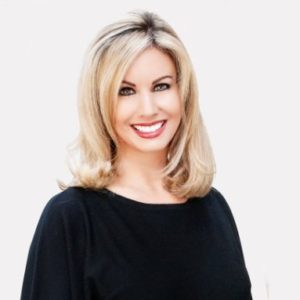This past weekend, New York City had one of its biggest snowstorms ever, and, as usual, this presented an opportunity for brands to engage in the social conversation. Not surprisingly, New Yorkers expressed a lot of joy, surprise and down right frustration across social channels. What was surprising is that as the snow and chatter piled up across Gotham, most brands stayed pretty much out of sight. We believe this was a lost opportunity. [Note all of the research for this article was done by our social analyst Andres Monsalve]
NETFLIX: #Netflix&Chill.
Across the social chatter, it was pretty obvious that #Netflix&Chill was going to be present and dominate a huge part of the conversation.
Did Netflix use this opportunity for their benefit? Not so much.
These were their tweets about #blizzard2016:
How I feel about today’s weather… pic.twitter.com/lNzUGU01LB
— Netflix US (@netflix) January 22, 2016
Weekend whiteout. Don’t blow it. #Narcos #Blizzard2016 https://t.co/SpqhFw7EAN
— Netflix US (@netflix) January 23, 2016
Could Netflix have taken advantage of this social happening in a more buzz-generating fashion? Most likely yes. For example, Netflix could have rolled out a group of special releases for the #Blizzard, encouraging their users to watch a few and of course, chill. Or bundle a bunch of bad weather related films into a binge-watching marathon.
ALCOHOL BRANDS
For many New Yorkers, spending two days in one’s tiny apartment can feel a bit like a jail term. Some people were worried about suffering cabin fever during this “extremely long” period of confinement. In order to bear with this suffering, many find a bit of alcohol a welcome companion. Note that NYC now has the 5th largest number of craft breweries in America. However, most alcohol brands did not engage in the conversation at all and ignored the opportunity to “come to the rescue.”
#blizzard2016 has us feeling some type of way, but the Tasting Room is open. Come dream about Summer with us. pic.twitter.com/cmTdr4TYoK — The Brooklyn Brewery (@BrooklynBrewery) January 24, 2016
Brooklyn Brewery, at least, demonstrated how to use #blizzard2016, enlightening us with this innovative way to take advantage of the snow.
FOOD DELIVERIES
The real unsung heroes in this blizzard were the #FoodDelivery guys as thousands of New Yorkers stayed in and ordered out. As George Herbert Palmer said about the postal workers once, “Neither snow nor rain nor heat nor gloom of night stays these couriers from the swift completion of their appointed rounds.” The men and women who deliver food ‘round the clock truly help make NYC the greatest city in the planet, and New Yorkers recognized this during #blizzard2016. More than 600 mentions were about tipping your delivery guy more than 20%. Unfortunately for their brands, neither @Seamless nor @Grubhub chose this as an opportunity to join this conversation and support the folks that make their service possible. Like empty seats on a plane, this was a lost opportunity.
THE WINNER
The big winner in joining the blizzard conversation was the @NationalZoo who shared a gleeful video of #TIANTIAN, the panda, rolling in the snow. #TIANTIAN garnered more than 13,000 mentions over the weekend and stole our hearts. What can we say? Guess we all have a soft spot for furry animals playing in the white stuff. Here is the video of #TianTian enjoying #Blizzard2016.
Tian Tian woke up this morning to a lot of snow, and he was pretty excited about it. #blizzard2016 pic.twitter.com/GrhI9t1u7j
— National Zoo (@NationalZoo) January 23, 2016
Responding to social conversations like the #2016Blizzard in real-time is tricky business, requiring a great deal of preparation and then, lightning fast wit. Clearly most brands rode out this particularly storm but perhaps others will plan ahead for the next big opportunity. We hope so.





